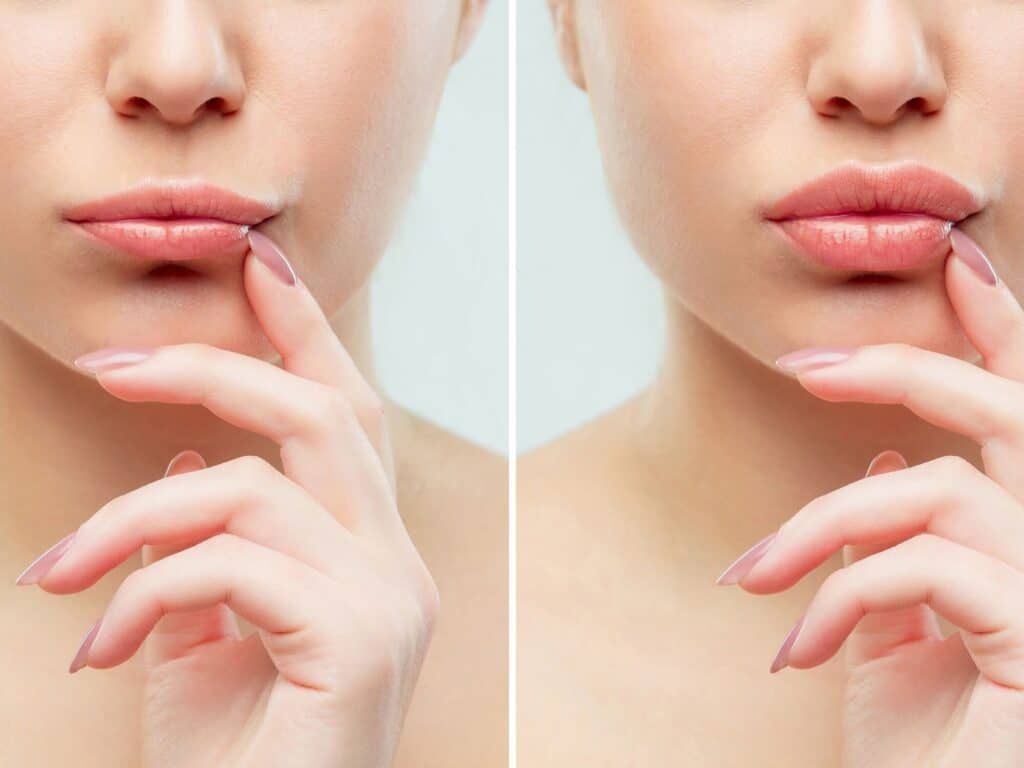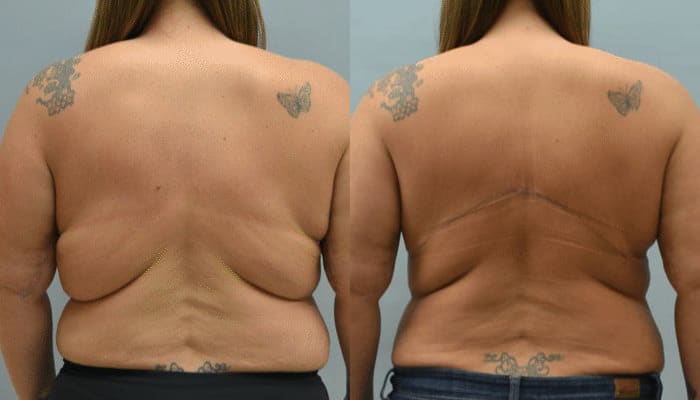Benefits of Facial Sculpting
Minimal Downtime
Facial sculpting technologies like FaceTite and Evoke are known for their minimal downtime. Patients often experience a quicker recovery compared to traditional surgeries. This is because these procedures are less invasive. They don’t require large incisions or extensive tissue manipulation. As a result, individuals can return to their daily activities sooner, making the treatment more convenient.
These methods also tend to be less painful. The discomfort associated with recovery is significantly reduced. This makes the overall experience more positive for patients seeking facial enhancements.
Enhanced Confidence
One of the most profound benefits of facial sculpting is its ability to boost self-confidence. By aligning one’s external appearance with their internal self-image, individuals often feel more comfortable in their skin. This alignment can lead to significant improvements in self-esteem.
Feeling good about one’s appearance can open doors to new opportunities. It might encourage people to pursue goals they previously felt hesitant about due to their insecurities.
Versatile Solutions
Facial sculpting offers versatile solutions for various concerns. Whether it’s sagging skin, a double chin, or undefined jawlines, there’s a procedure tailored for each issue. This versatility allows practitioners to provide personalized treatments, ensuring that each patient receives the most effective solution for their specific needs.
Types of Facial Sculpting Procedures
FaceTite
FaceTite stands as a revolutionary contouring system. It uses radiofrequency energy to melt fat and tighten the skin. This method is ideal for larger facial areas needing contouring, like the jawline and neck. Patients see significant improvements without the downtime of traditional surgery.
AccuTite
AccuTite specializes in smaller, more delicate regions. It’s perfect for baggy eyelids or nasolabial folds. By applying focused radiofrequency energy, AccuTite offers precision treatment. It leads to less swelling and quicker recovery times compared to broader treatments.
Evoke
Evoke technology targets facial tissues with bipolar radiofrequency energy. Its design is non-invasive, making it a convenient option for those wary of surgery. It works well on the cheeks and jowls, providing a defined appearance without incisions.
SculpSure Submental
SculpSure Submental addresses fat under the chin through laser technology. It’s a quick procedure that reduces fat cells and enhances jawline definition. The process is comfortable with no need for anesthesia, appealing to many seeking minimal discomfort.
Ultherapy
Ultherapy uses ultrasound to lift and tighten skin across various facial areas. It’s unique because it also stimulates collagen production, offering long-term benefits beyond immediate lifting. Ideal for the brow, neck, and under-chin area, Ultherapy provides a non-surgical solution to sagging skin.
These procedures offer versatile solutions for facial enhancement, from skin tightening to fat reduction. Whether targeting larger areas or focusing on delicate spots, there’s an option tailored to every need.
Recovery Process Insights
Quick Downtime
Non-invasive procedures like Ultherapy boast quick recovery times. Patients often return to their daily activities shortly after treatment.
The minimal downtime associated with these treatments is a significant advantage. It allows individuals to enhance their appearance without putting their lives on hold. Unlike more invasive surgeries, non-invasive facial sculpting does not require long periods away from work or social activities.
Managing Discomfort
Mild discomfort or swelling may occur post-procedure. However, these symptoms are usually manageable and temporary.
Ice packs can reduce swelling and alleviate discomfort. Over-the-counter pain medication also helps in managing any mild pain. It’s crucial to follow the specific aftercare instructions provided by your healthcare professional to ensure a smooth recovery. These steps aid in minimizing discomfort and speed up the healing process.
Post-Procedure Care
Following professional advice post-procedure is vital for optimal results and reduced recovery time.
Professionals provide detailed care instructions tailored to each procedure. Adhering to these guidelines ensures that the recovery process is as efficient and comfortable as possible. This includes avoiding direct sunlight, using recommended skincare products, and attending follow-up appointments as advised. Maximizing results while minimizing recovery time hinges on following these post-procedure care instructions closely.

Enhancing Facial Contours with Technology
Radiofrequency Methods
Radiofrequency technology, like FaceTite and Evoke, offers a non-surgical approach to enhance facial contours. These methods remodel tissue and tighten skin effectively. They work by heating the deep layers of the skin.
This process encourages collagen production. As a result, patients see a reduction in wrinkles and fine lines. The entire face appears more sculpted without undergoing extensive surgery.
Ultrasound Techniques
Ultherapy uses ultrasound technology to lift and tighten skin. It targets the foundational layers of the skin not typically reached by conventional lasers.
This technique stimulates collagen production beneath the surface. Patients notice their skin becoming firmer and more youthful-looking over time. Ultherapy provides a natural-looking enhancement, focusing on lifting the face subtly but noticeably.
Targeted Precision
Technologies like AccuTite and SculpSure Submental are known for their precision in targeting specific areas. AccuTite focuses on smaller regions requiring detailed work, such as around the eyes and lips.
SculpSure Submental targets under-chin fat, helping define jawlines more clearly. These technologies allow for tailored treatments that address individual concerns about facial features. They contribute significantly to achieving more defined facial contours without invasive procedures.
Pre and Post Surgery Expectations
Consultation Importance
Patients must set realistic expectations for facial sculpting surgery outcomes. Results can vary, but they generally lead to a more refreshed and youthful appearance. It’s crucial to consult with a qualified surgeon. They will discuss goals, procedure options, and potential results tailored to individual needs.
During the consultation, surgeons evaluate the patient’s facial structure. They also consider their health history to recommend the best approach. This step ensures that patients are well-informed about what to expect.
Immediate Aftercare
After surgery, patients enter a critical phase of recovery. Immediate aftercare involves managing discomfort and swelling. Doctors usually prescribe medication for this. They also advise on how to care for the surgical site.
Patients should follow these instructions carefully. It helps in reducing the risk of complications and ensures a smoother recovery process.
Recovery Timeline
The post-procedure timeline is predictable but requires patience. Initially, swelling and bruising mask the surgery’s effects. However, as these subside, the new facial contours begin to emerge.
It typically takes several weeks to months to see the final results. Patients gradually notice a more defined facial structure. The outcome is a rejuvenated appearance that aligns with their pre-surgery vision.
Eligibility for Sculpting Procedures
Ideal Candidates
Ideal candidates for facial sculpting are those in good health. They have realistic expectations about what the procedure can achieve. Specific concerns that align with the capabilities of sculpting are crucial.
A thorough evaluation by a professional is necessary. This ensures the most suitable procedure is selected based on skin type, age, and desired outcomes.
Health Considerations
e conditions or health issues may preclude individuals from certain procedures. It’s vital to have full disclosure during consultations.
Professionals emphasize the importance of honesty about one’s health history. This allows them to assess risks accurately and recommend safe options.
Detailed Surgical Techniques
FaceTite Technique
FaceTite uses radiofrequency energy to tighten the skin. It is a less invasive procedure compared to traditional surgery. The plastic surgeon inserts a small probe under the skin. This probe emits radiofrequency energy. It heats the underlying tissues, causing them to contract.
This technique results in immediate tightening effects. Patients see improvements without lengthy downtime.
AccuTite Precision
AccuTite stands out for its minimally invasive approach. It targets small, precise areas with a tiny cannula that delivers radiofrequency energy. The procedure is ideal for individuals seeking targeted sculpting without major surgery.
It offers quick recovery times. Many return to their daily activities within days.
Ultherapy Visualization
Ultherapy uses ultrasound imaging to visualize the skin’s deeper layers. This allows surgeons to target specific areas for lifting and tightening accurately. They apply focused ultrasound energy, which stimulates collagen production.
The result is a gradual lifting effect over several months. Patients appreciate this non-invasive option for its natural outcomes.
Final Remarks
Facial sculpting surgery offers a transformative journey towards achieving your desired facial contours, combining advanced techniques and technology to tailor results specifically for you. From understanding the various procedures available to grasping the recovery insights, you’re now equipped with knowledge to make informed decisions. Whether it’s enhancing your features or addressing specific concerns, facial sculpting opens up a realm of possibilities.
Before taking the plunge, remember eligibility and detailed surgical techniques play a crucial role in ensuring the success of your procedure. Trust in professionals who not only have the expertise but also understand your vision. Ready to embrace a confident new you? Reach out to a certified facial sculpting expert and start your journey towards refined beauty today. Your ideal self awaits.
Frequently Asked Questions
What are the main benefits of facial sculpting surgery?
Facial sculpting can enhance your natural features, improve symmetry, and boost self-confidence by aligning your appearance with your desired look.
Which types of facial sculpting procedures are available?
Common procedures include facelifts, rhinoplasty, chin implants, and cheek augmentation, each tailored to meet specific aesthetic goals.
How long is the recovery process after facial sculpting surgery?
Recovery times vary by procedure but generally range from one to two weeks for noticeable swelling to subside and up to six months for complete healing.
Can technology improve outcomes in facial contour enhancements?
Yes, advanced imaging and surgical technologies allow surgeons to plan meticulously and execute procedures with precision, leading to more predictable and refined results.
What should I expect before and after my facial sculpting surgery?
Expect consultations for personalized treatment planning pre-surgery, and follow-up care including rest, limited activity, and adherence to recovery guidelines post-surgery.
Who is eligible for facial sculpting procedures?
Eligibility depends on overall health, skin condition, age, and specific aesthetic concerns. A consultation with a qualified surgeon can determine if you’re a good candidate.
Can you describe some detailed surgical techniques used in facial sculpting?
Techniques vary widely but may involve incisions hidden within natural contours, removal or addition of tissue, and reshaping bone or cartilage to achieve desired contours.










